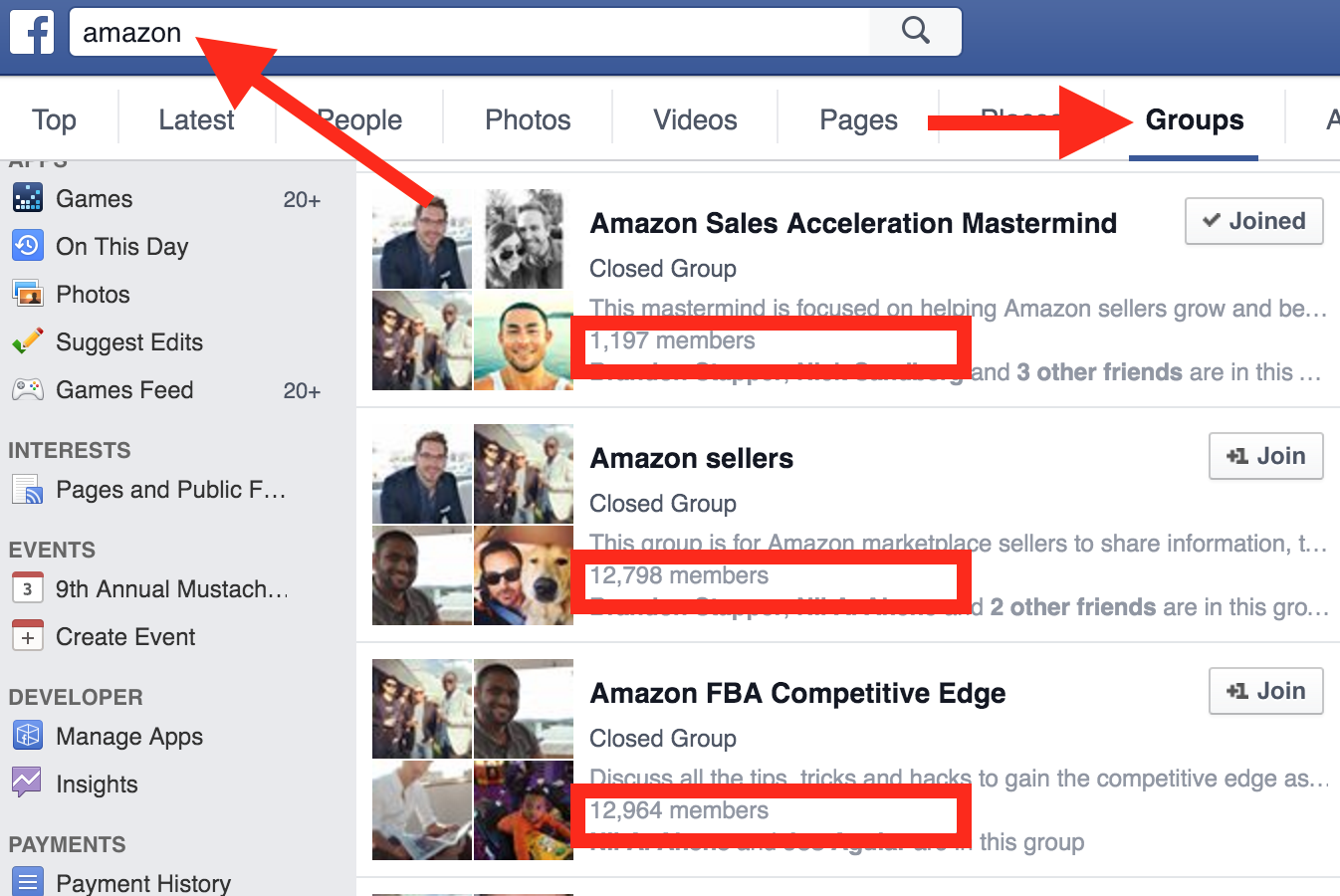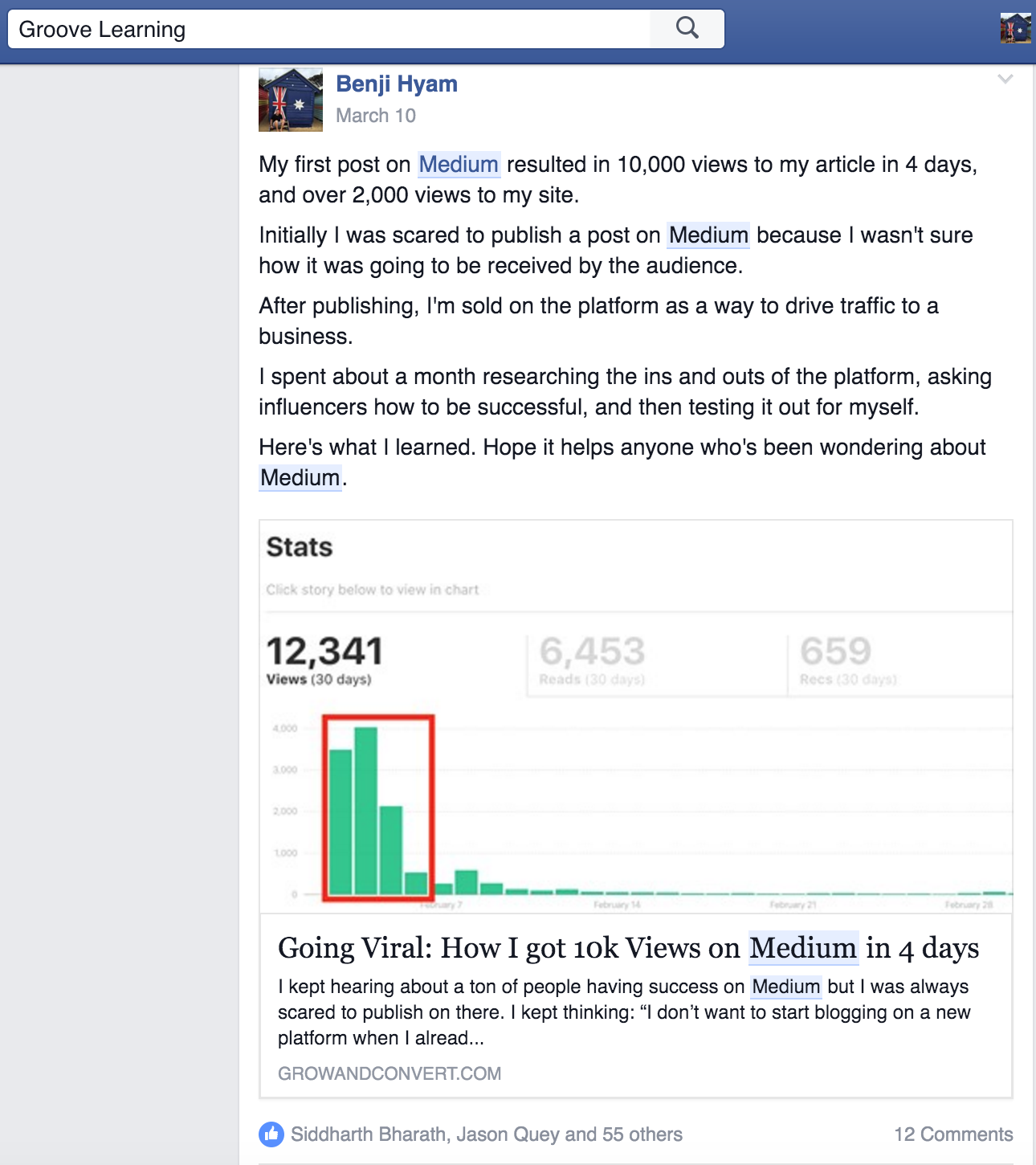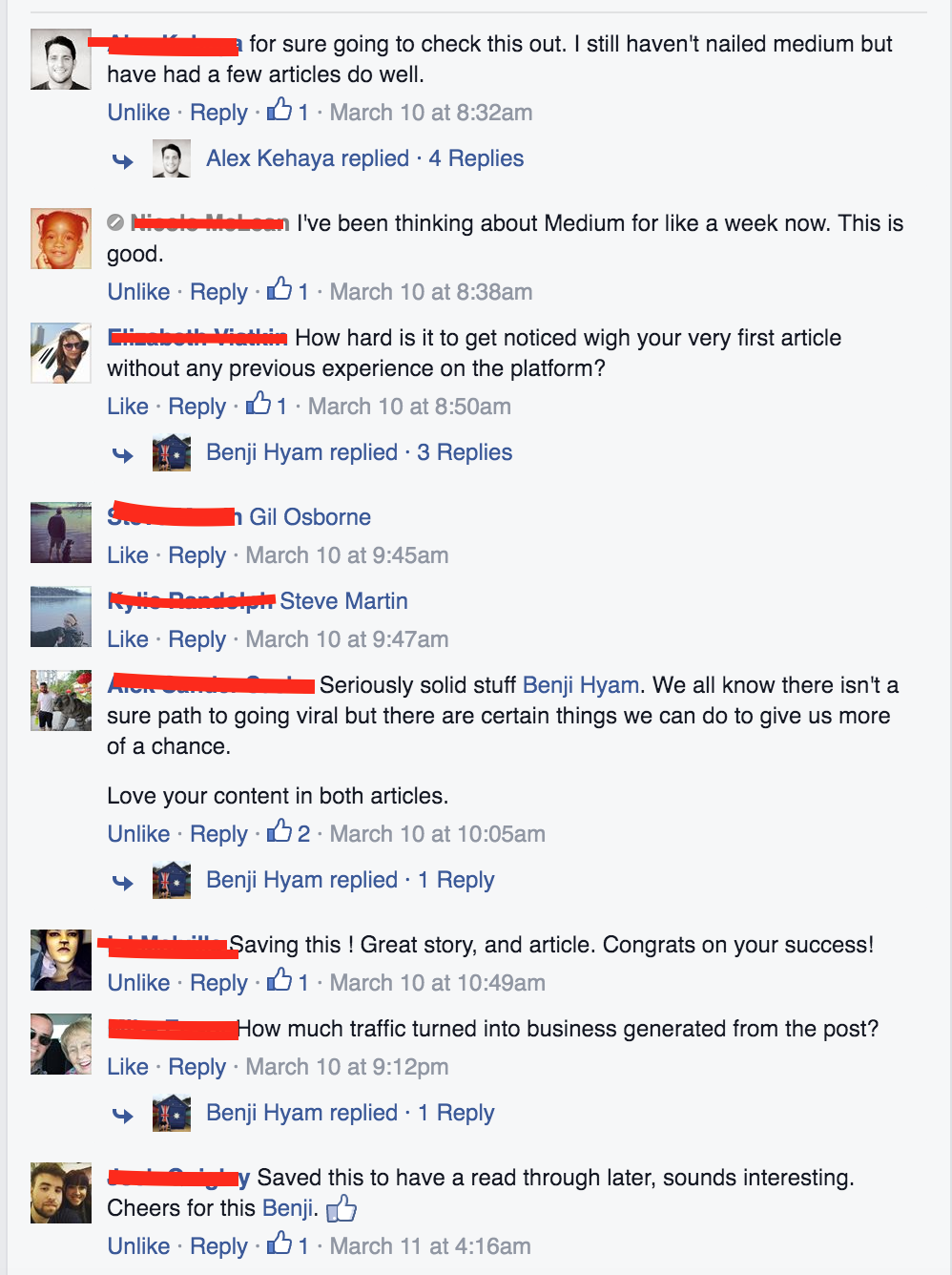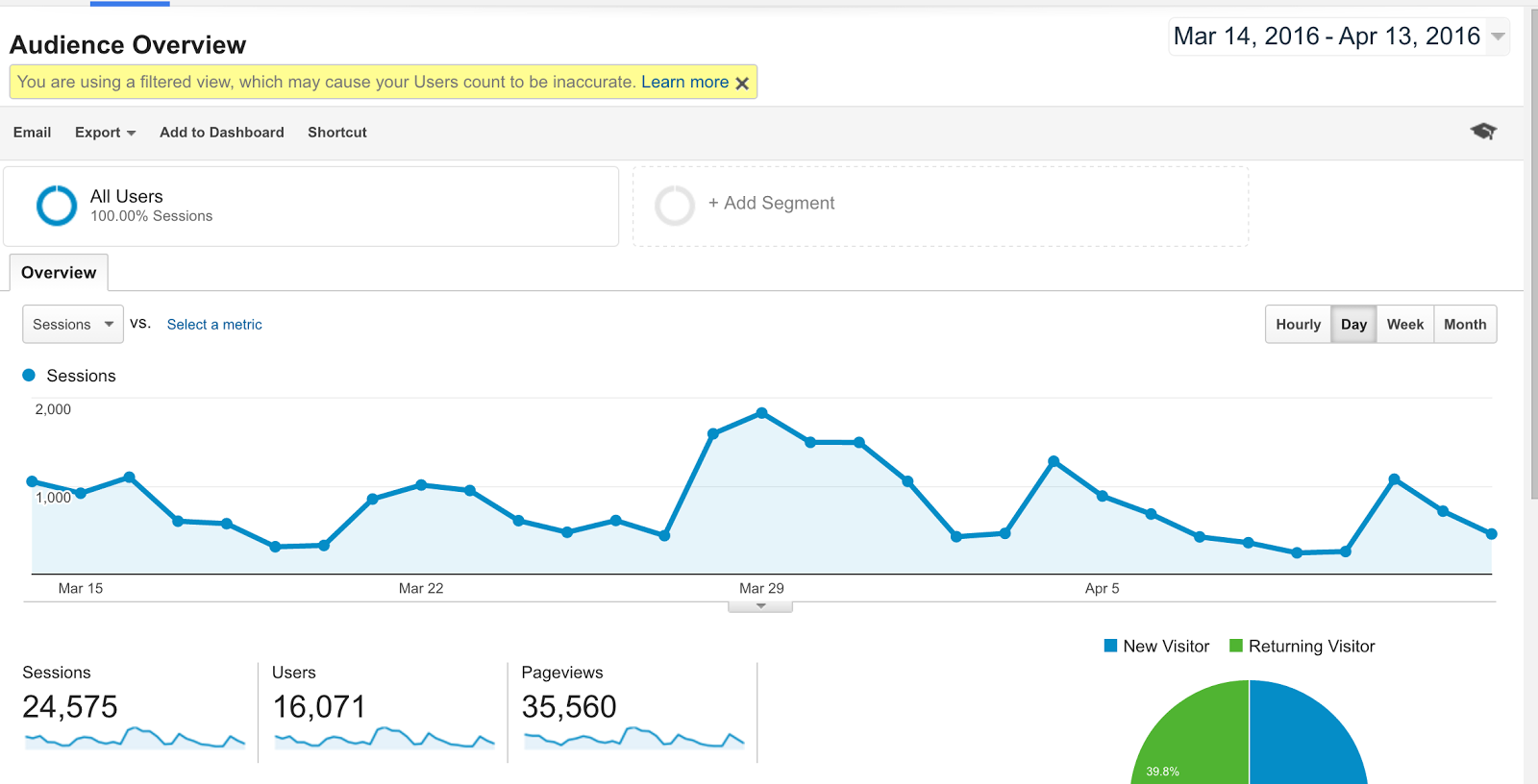Content promotion seems to be the part of content marketing that most people struggle with.

It sucks spending hours, and hours, writing a quality piece of content, only to publish it and not get any readers.
Or even worse, you get a lot of readers to your posts, but the audience you’re attracting isn’t your target audience.
In true Grow and Convert style, we’re going to case study the thought process behind everything that we’ve done to grow our blog to 32,977 unique visitors in 5 months using only content promotion via communities.

Why Community-Driven Content Promotion?
You can boil down content promotion to this single concept: Find places online that contain a lot of people in your target audience so you can share your content with them.
The biggest value that comes from promoting your content through communities is that someone has already done the hardest work for you — they’ve built an audience of people within your target market.
Therefore, your goal is twofold when it comes to community-driven content promotion:
- Find the communities that contain your target audience
- Engage with the community, form relationships, and share your content so that it adds value (instead of spamming the community).
In this post, we’ll share ideas on how to do both.
Before we start finding communities that will help you grow traffic, I want to talk about a common missed step when it comes to content marketing and promotion strategy.
Step 1: Defining Your Target Audience
Why Defining The Audience That You’re Going After is The Most Important Step In Content Promotion (And It’s The Step Most Miss)
Coming up with a narrowly defined audience is the most important step of content promotion that people forget about.
You may be thinking:
“What does defining your target audience have to do with content promotion”
Or…“This sounds like Marketing 101… tell me something I haven’t heard. ”
But, in getting a lot of reader email’s lately, many people have said that they’re able to drive traffic to their site, but their readers aren’t the right target audience AND they don’t convert.
So, if you’re having this problem, then this is likely because you:
- Ignored this step
- Thought about it, but didn’t execute properly
Let me explain.
When we talk about content promotion, we’re not just talking about driving traffic for the sake of driving traffic. If you run a business, driving random traffic will not help you get ROI for your content marketing efforts.
We want to help you promote your content so that you attract the RIGHT audience, and so that they’ll eventually purchase from you.
The reason why I’ve been able to close 6-figure deals directly off of a blog is because I was able to attract the right audience through content promotion.
If I hadn’t defined a specific audience that I was going after, I might have been able to get high traffic numbers, but when it came to conversions my numbers would be low, if not, non-existent.
For example, when we started Grow and Convert, we made the decision that we wanted to focus on going after marketers inside of companies.
To get even more specific, we wanted to focus on providing helpful advice to Marketing Coordinators, Marketing Managers, Content Marketing Managers, Marketing Directors, Early Stage Startup Founders (because they’re likely hiring marketers or involved in marketing) AND anyone in an organization that touches inbound marketing or content marketing.
That is the audience we’re going after.
This is important because this distinction informs what we write about and where we share our content.
Although Grow and Convert covers content marketing, note that we have zero articles on “starting a blog”, “making money blogging”, “starting a side business”, “introduction to blogging,”etc. This is not by accident.
These topics appeal to solopreneur bloggers or freelancers trying to start something online on the side. We have nothing against this topic or the audience, they’re just not our target audience.
If you’re a content marketing manager for Airbnb, or a $20 million per year ecommerce company, and you’re looking for detailed strategies on how to grow sales through content marketing, if you came across an article on our site about how to make $1000/month on the side by blogging, would that article relate to you? No.
There would be a disconnect in what you came to the site for and the type of content delivered.
The lesson is that you want your target audience to say “Wow, this site was made for me” the second they land on your site.
So far this strategy has been paying off for us:

If you have your target audience narrowly defined, when you get to step 2, the research phase of community-driven content promotion, it should be easier for you to find communities that contain hundreds, if not thousands, of readers waiting to discover your site.
Step 2: Researching Places to Promote Your Content
How to Uncover Where Your Target Audience Is Hiding (Finding Communities Where Your Target Audience Already is)
Once you have your target audience narrowly defined, it’s time to do some research to uncover places where your target audience already is online.
For us, since we had made the distinction that we were going after marketers inside of companies, we were looking for groups and communities that would have our target audience in them.
I’m going to show you two ways to do research:
- Finding communities via Google and Social Networks
- Asking your customers where to promote your content
How to Find Communities via Google and Social Networks
To find communities in your niche, here’s some ideas.
For our blog, a simple Google Search for “marketing communities” turned up an article that had 5 active communities in it. Inbound, GrowthHackers, etc.
You can start by running a Google search to see if there are any communities around your topic.

If that doesn’t get any results, then you could try asking people on a Q&A forum like Quora. Just like this person did..
The types of communities that Quora turned up would be perfect for someone who ran content for an SEO agency, a SaaS app that helps with SEO, etc.

Most likely someone will respond to your question on Quora, but if for some reason you weren’t able to find any good communities, there’s likely a community on Reddit around your topic.
A sales community like this one on Reddit would be good for someone who ran content marketing for a SaaS product (like Outreach.io) that specializes in cold email outreach, a cold-calling service, marketing automation software, attribution modeling software, etc.

If there aren’t any communities around your topic on Reddit, you could search Facebook for communities around your topic.

These types of Facebook communities would be good if you ran a Paid Search Agency that specialized in Retail Customers. Even for very specific use-cases like this, there are communities that exist. And even though they’re small compared to some of the larger topics, they’re highly engaged.
If there aren’t groups for your audience on Facebook, then try Google+.
The type of Google+ group below would be great for someone running content for a software development firm. Especially one that specializes in Android development. While some may think Google+ is dead, this group has over 100,000 people in it. Engagement might be a little bit lower, but these types of groups can still drive quality visitors.

If Google+ doesn’t turn up anything, then try LinkedIn groups.
The LinkedIn group below would be good if you were running content for a firm that specialized in software development, had a wireframing SaaS app, etc.

Alright, I just gave you 6 different ways you could do research for different types of communities. And I’m sure, there’s tons more ideas on where to find communities.
The point is that there’s tons of communities out there for all different sorts of topics.
Your goal in the research phase is to create a list of the largest and most engaged communities around your topic.
There’s no excuse to why you shouldn’t be able to find at least 5 communities to test out content promotion with. If you’re having trouble finding some, leave us a comment below and we’ll try and help you find some.
And if all else fails, maybe look at this as an opportunity. Create a community around your topic and guide the conversation for the group.
Asking Your Customers What Sites and Communities They Frequently Visit to Find Places to Promote Your Content
If you’re having trouble finding communities through search, then try asking your customers. This is actually the way I’ve found the best promotion channels for content.
I’ve found that a lot of companies are afraid to talk to their customers, but this is the best way to get valuable qualitative data to help you make more informed decisions.
There are two ways that I’ve found to do this successfully:
- In a welcome email or by sending out an email asking a question
- Surveying your audience via an online survey or over the phone
Emailing Your Customer Base to Gain Valuable Insights About Where to Promote Content
Our welcome email to our newsletter list describes a little bit about Grow and Convert and asks one simple question: What’s your biggest challenge in Marketing?

This does two things for us. It opens up conversations with our readers which then allows us to ask more specific questions to get better feedback and understand our readership on a deeper level. And it also gives us insight into what people’s challenges are, what they’ve tried doing, and what other content and sites they read for help, etc.
With all of this information we’re able to figure out what sites our readership frequently visits and what other sites they like for content. Then we can try to form relationships with those sites or engage with those communities to get access to more people in our target audience.
Another thing you could do is swap out an email newsletter type email for a personal email from the blog manager or someone in your company asking what would make your email more valuable and asking to understand your readership better by asking what other blogs and sites they frequently visit to stay up to date on X industry.
I did this when I was at Everwise and turned a list that I thought was stale into a highly engaged list that had tons of responses from email subscribers. Although I don’t have an exact copy of the email anymore, here’s an example of what the copy was:

Turns out, we were just marketing at people, and when subscribers got the opportunity to share feedback and share information about themselves, they were extremely excited and willing to respond.
This gave me valuable insight into what influencers people followed on Twitter, what HR blogs people frequently visited, what communities people were a part of etc. And it informed my decisions on where to spend time on content promotion going forward.
Surveying Your Audience to Gain Valuable Insights on Where to Promote Content
I got this idea when I went to go see Hiten Shah speak in San Francisco at a GrowthChats event. His whole talk was about product/market fit and gave us a sample product/market fit survey that we could send to our audience – via Survey.io.
That got me thinking, what if we could send out a survey like this to our customers and get feedback on where to promote our content.
Well that’s what I did. When I was at ThinkApps, I sent out an online survey via Survey Monkey (or you could use a tool like Typeform) and talked to our customers over the phone and in person. I asked them questions like:
Where do they go for valuable information about software development, design, etc. ?
Who do they trust for advice on software development?
When they were researching software development, where did they go?
The answers to these questions gave me a ton of ideas on what to focus on from a content strategy perspective and also where to spend my time for promotion. Since most people did research via Google, I focused almost all of my efforts on trying to rank in Google for long-tail search terms.
Customers also told me they frequent sites like HackerNews, Reddit, Quora, GrowthHackers, DesignerNews, etc. So that’s where we focused our efforts on content promotion.
Step 3: Developing Core And Secondary Community Promotion Channels
Now that you have ideas on how to do the initial research to find communities to promote your content in, it’s important that you develop core and secondary promotion channels.
The core promotion channels you can use for almost all of your posts, because for the most part, everything you write about will relate to the audience of those groups.
The secondary promotion channels are channels you would use to promote specific posts, these might differ from the normal groups you target due to a more specific niche.
Here’s how the breakdown of core and secondary promotional channels would relate to our site. I’ve also included descriptions of why we chose these groups so that you can understand the thought process behind each of them.
The Core Promotion Channels We Use
- GrowthHackers – Targeted towards advanced marketers inside of companies that specialize in growth
- Inbound.Org – Another community for marketers inside of companies
- Digital Marketing Questions (Facebook) – A group for digital marketing professionals
- The Content Marketing Lounge (Facebook) – A group for content marketing professionals
- CopyMonk (Facebook) – A group at the intersection between copywriting and content marketing
- Digital Marketing (LinkedIn) – A group for digital marketing professionals
- eMarketing Association Network (LinkedIn) – The world’s largest internet marketing association
- Content Marketing & Social Media (Google+) – A group focused around social media and visibility around quality content
- SEO and Content Marketing Masters Google+ – Expert SEO and Content Marketing Tips
Secondary Promotion Channels (Specific Groups Related to Posts You Wrote)
For the post: Why Marketing Has Become The Hardest Position To Hire For
For my piece on hiring marketers, the core promotion channels will likely get the initial word out but we might also want to share this piece in groups that have C-Level Executives, Recruiters, Entry-level marketers, etc.
In this case, even though some of those titles are outside of our ‘core target audience’ the goal of the secondary promotion channels is to get your piece of content in front of an audience that interacts with your core target audience.
The below examples are groups that we would research specific to a post that we launched. Yes, it requires additional time and effort, however sometimes these secondary promotional channels have the highest return on investment because the post relates more to the audience in these types of groups.
- Marketing Executives Group – A group for marketing executives – we wanted to share here because this post specifically has to do with hiring.
- Recruiting Groups – We want to get this in front of recruiters because they typically work with senior level management at companies. Maybe they’ll use this post to help sell their services.
- CloudPeeps Facebook Group – Cloudpeeps is a marketplace for hiring freelance marketers. This post might make the case that it’s better to hire a CloudPeep than to hire in house. Therefore by sharing it with that audience, they’ll likely promote the content because it helps make the case for what they do.
Step 4: Engaging with Communities
How to Share Content So That It Provide Value (Instead of Spams a Community)
When joining a new community, DO NOT SHARE A POST AS THE FIRST THING YOU DO WHEN YOU JOIN.
Whoa, sorry for the caps there… I got a little carried away. But seriously, I have to emphasize that point.
The first thing that you should do when entering a new group or community is read the guidelines, stay inactive for a week or two, and study the culture.
Then, you should start engaging in the comments (yes, provide your expertise for free and help others), and then when you feel like you understand the group dynamic, start posting your own content.
What Types of Posts Do Well In Groups?
Don’t be the person that goes into a group and says: “Wow this post is great, you all should check it out.” Then someone clicks into the post only to find out that you wrote it.
You’re not tricking anyone. That would be considered spam.
If you’re going to post your own article in a group, own it. Let people know that you wrote it and why you’re sharing it with them. If you have an affiliation with the post, just be honest. It’s that simple.
Here’s an example of a post I shared in the group Groove Learning.

It got 57 likes and 12 comments. And almost all of the comments were positive!

This post wouldn’t have done well if I had simply written one line of copy. Instead of chose to tell a story – that’s why the post had a high level of engagement.
This brings me to my next point:
Don’t half-ass your social shares. If you’re going to post in a group, then put some effort into your post.
Tell a story. Relate to your audience. Be aspirational.
Those are the posts that do well in groups.
Here’s another example of a post that I did in Digital Marketing On LinkedIn:

Again, the reason this post did well is because I tried to relate to my audience in the description of the post.
Forming Relationships with People Through Commenting
Through commenting alone, I’ve been able to form relationships with people who become loyal fans and people that I also get to learn a ton from. Some of those people have become hugely valuable to our growth.
For example, I met Danavir Sarria of CopyMonk when I saw his post in Cult of Copy, and then ended up sharing his post on Grow and Convert because I thought it was such a unique example of content marketing. Through sharing his content and commenting on his work, I formed a relationship with someone who has become a great asset to Grow and Convert, and someone I’ve been able to learn from.
When you comment on other people’s threads, they’re more likely to comment on your posts when you share. So the more you comment in communities, the more “friends” that will like your post.
It’s important to get comments and likes on your thread quickly when you post in a community, so if you start building relationships with community members, you’re more likely to get engagement quickly and you’re also able to call in more favors from community members.
Now What You’ve All Been Waiting For: The Impact of Using The Community-Driven Content Promotion Strategy
It wouldn’t be a Grow and Covert style post unless we showed you the impact that using this strategy has had on our site.
In a little less than 5 months, we grew from 0 to 32,977 unique visitors (users) all through using the content promotion strategy we highlighted above.
In the last month, we brought in just shy of 25,000 sessions and 16,071 unique visitors.

Our email list has grown from 0 – 1,767 subscribers.

Our domain rank has increased from 1 to 29 and we have 149 root domains linking to our site. We haven’t done any link-building thus far, all of our links have been built from people finding us through communities.

If done right, using communities to drive highly targeted visitors can have a huge impact on your site. It’s one of the fastest and cheapest ways to grow.
Many people ask the question:
“How do you know if you’re driving “targeted visitors” to your site”
The answer:
We know we’re driving targeted visitors due to the email addresses that we’ve collected and the responses we’ve received to our welcome email.
Want us to write an in depth case study or story like this about you or your company? We’ll also drive traffic to it. Apply here.
Like this article? We produce stories like these for our clients, learn more here.
Join the G&C Content Strategies Newsletter
We send in depth articles about content marketing about once a week. No list posts, no high level stuff.
It's free and marketers at companies such as Salesforce Desk, PayPal, and Cisco have joined.









